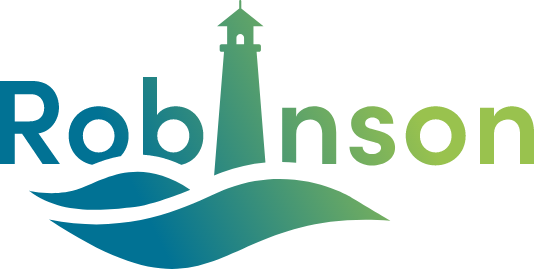Interview with Ugo Simeoni, Research and Innovation Manager – ETN Global, ROBINSON project coordinator

Islands often find it challenging to ensure a clean, secure and cost-effective supply of energy. The key is to decrease dependency on fossil fuels and become energy self-sufficient through a mix of renewable energy generation and storage infrastructure. To support islands in their quest to decarbonisation, the European Union’s Horizon 2020 Research and Innovation Programme funded a new project coordinated by ETN Global: ROBINSON (grant agreement n. 957752).
What is the main goal of ROBINSON?
ROBINSON’s main mission is to develop an integrated energy system to help decarbonise islands. Its newly developed Energy Management System (EMS) will couple locally available energy sources with innovative energy and storage technologies across different energy vectors (electricity, gas, and heat). This integrated system will ensure a reliable, cost-efficient and resilient energy supply, contributing to the decarbonisation of the European islands by helping to decrease CO2 emissions. ROBINSON’s energy system will be demonstrated in real-life conditions on Eigerøy, an island off the South-western coast of Norway. Replication studies will be conducted for Crete (Greece) and the Western Isles (United Kingdom), ensuring flexibility and further replicability. Indeed, user-friendliness and modularity of the system will facilitate replication to other energy islands with similar conditions.
What are the key elements of ROBINSON?
Technological innovation plays a pivotal role in ROBINSON. With a general technological knowledge brought to the partners assessed at TRL 5, several technologies will reach TRL 7 by fulfilling the objectives of the project. ROBINSON’s will invest significantly in developing, testing, adapting and making market-ready key technologies that will support Europe in its energy transition. For example, ROBINSON’s EMS will ensure an efficient and smart integration of all distributed energy resources (DER), energy surpluses, and storage capacities available on the island, while considering demand-side response, power balancing, weather forecast and market-related costs.
But the innovative potential of ROBINSON does not end at the EMS: several different energy and storage technologies will be installed and demonstrated in a pilot plant on Eigerøy (area of Kaupanes), on the site of Prima Protein. Indeed, ROBINSON’s system will integrate hydrogen-related technologies (electrolyser and storage system), an anaerobic digester assisted by bio-electrochemical systems to enable the conversion of liquid waste into biomethane, a gasifier to covert bio-waste, an innovative wind turbines, a small gas turbine based combined heat and power, as well as local renewable energy sources such as solar PVs. Finally, these technologies can further be applied to other sectors such as microgrids, residential and ROBINSON municipality buildings, energy intensive industries, electrified harbours, cleaner road transport.
What are the objectives of ROBINSON?
To support a whole community in its strive for decarbonisation and emissions reduction requires a broad spectrum of expertise and a comprehensive approach. From the development, optimisation and validation of new innovative technologies, to large-scale applicability, from the replicability of the system, to positive impact on the environment and on the human health, every aspect of ROBINSON is structured so to help islands achieve their decarbonisation goals, while contributing to Europe’s technological advancement, improving quality of life, protecting the environment, and being cost-competitive and market-ready. Some of ROBINSON’s objectives are:
- Develop and validate a modular and flexible Energy Management System integrating different energy vectors;
- Optimise, validate and integrate innovative technologies for energy & heat production, and for long-term energy storage;
- Demonstrate large-scale applicability and replicability of the ROBINSON’s system;
- Have a positive impact on human health and on the environment;
- Being cost-competitive when benchmarked against potential alternative technologies.
What are ROBINSON’s expected impacts?
Surely one of the most relevant expected impacts is to accelerate the decarbonization of islands through reduction of fossil fuel consumption, increased efficiency, better integration of renewable energy sources, and waste valorisation. Moreover, thanks to the use of hydrogen as an energy carrier, ROBINSON will increase the system flexibility in terms of peaks shaving in energy production and demand, decoupling the electricity and thermal power values and balancing different ramp rates of components in the energy system.
The specific ROBINSON energy systems and its different component will also increase network stability and the security of energy supply thanks to long-term storage, smart integration of energy sources across different energy vectors, and reduction of energy waste. ROBINSON aims also to offer a concrete solution for decarbonization for (industrialized) geographical islands, landlocked islands and remote locations of Europe and worldwide; the high flexibility and modularity of the system and the integration of several technologies will facilitate the replicability on energy islands with similar needs, while decreasing potential costs (e.g. carbon taxes, investments for new cable connections, etc).
Last but not least, ROBINSON is developed with the community and for the community; the involvement of local stakeholders and an increase of (local) economic opportunities are also to be expected.
Any last comments?
There is no silver bullets for islands decarbonisation: each island has its own unique characteristics related to the RES penetration, weather and geographical conditions, population, tourism, distance from mainland and presence of industries. Thanks to ROBINSON, each unique trait of the island can become its strength and being integrated in a comprehensive system that aims at increasing economic opportunities, broadening the technology market, reducing emissions, and empowering local communities and industries.


 This project has received funding from the European Union’s Horizon 2020 research and innovation programme under grant agreement N° 957752.
This project has received funding from the European Union’s Horizon 2020 research and innovation programme under grant agreement N° 957752.